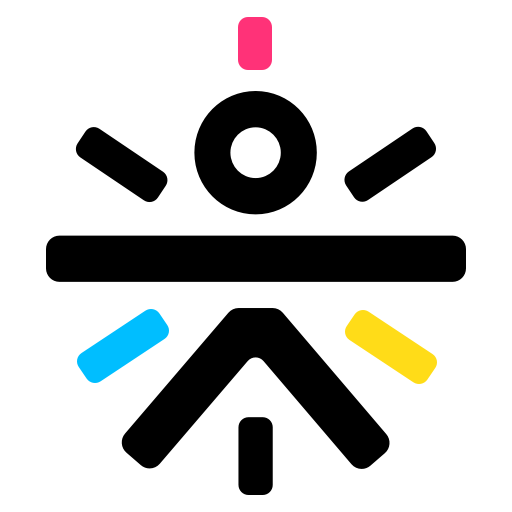Plank challenge for beginners is an isometric core strength exercise in which an individual maintains a position similar to a push-up for a maximum possible time for best results. There are many varieties of plank exercises for beginners, and it is highly recommended for a beginner to start with a high plank position that involves less effort. The plank workout for beginners strengthens the back, shoulders, and abdomen. Plank for beginners is encouraged by all age groups, unlike cardio, as long as they are physically fit. If a person starts practicing beginner plank position when he/she was a kid, he/she will be able to continue the exercise into old age effectively as it increases the entire strength of the body.
How to do a Plank?
The stepwise instruction on how to do a plank for beginners is mentioned below as follows:
- Place the hands on the ground either with the palms or fists clasped together.
- The feet must be placed as wide apart as the hip.
- One must place the balance on the balls of the feet.
- Take care to maintain the spine in a straight position.
- The tailbone must be tucked in and aligned with the spine. (It should be sticking into the air)
- The glutes and the butt muscles are squeezed tight.
- One must draw the belly button in towards the spine.
- The lats and the back muscles must be flexed and pulled away from the floor.
- Make sure that the lower back is not sagging and the booty is not popping up.
- The plank time for beginners is 30 to 60 seconds.
- Gradually on practicing it regularly, try to increase the time.
- As more time is held, better effective, on the body.
What are the Types of Planks?
The basic idea is to hold the body in a straight line with only the palms and toes touching the ground. The primary variations in planks are:
- High Plank
- Low Arm Plank
- Reverse Plank
- Side Plank
High Plank:
A high plank is a beginner plank position. It is done by starting with the push-up position. The palms and the toes are firmly planted on the ground. The back has to be maintained straight, and the core must be held tight.
Low Arm Plank:
This plank workout for beginners is the same as a high plank except that the body is lowered and balanced with forearms and toes.
Reverse Plank:
Reverse planks are excellent for glutes, hamstrings, the entire core, and the back of the body. This is done by facing the ceiling by lying on the back. Then the upper body is pushed with the arms beneath the body. The body must form a straight line, and one must hold this position.
Side Plank:
Side planks are amazingly beneficial for obliques and intercostals. It is done by rotating on the side by extending one arm towards the roof and balancing on one foot. This is not as easy as it sounds and requires a lot of balance and flexibility to perform.
What are the Health Benefits of Plank for Beginners?
A 30 day plank challenge for beginners is widely recommended for everyone. Plank for beginners generally has a wide range of health benefits. Some of them are:
- Plank for beginners improves the overall posture of a person as it strengthens the core.
- Plank for beginners increases the flexibility levels of an individual.
- Plank for beginners is an excellent workout to increase stamina.
- Plank for beginners is the key workout to achieve six pack abs as these are the best exercises to reduce belly fat.
- Plank for beginners helps to get rid of backache.
- Plank for beginners increases the coordination levels in the human system.
- Plank exercise for beginners will improve the body's metabolism.
Closure
Plank exercise for beginners is always a good exercise to incorporate into the daily fitness regime to get those killer abs. It can be done as a self-challenge workout daily by tracking the improvement in the holding time. No matter the fitness level, it is always best to be done even at a minimum holding time to get a stronger core and increase everyday abilities. Planks are a versatile exercise as a strong core can reduce all the stress on the joints and is an effective bodyweight exercise.
Top Search Terms For Yoga
Bhujangasana Procedure | Standing Forward Bend | What Is Yoga Nidra | Shambhavi Mudra Benefits | 7 Types of Pranayama | Mudra for High Bp | Halasana Yoga Benefits | Gyan Mudra Images | Balasana Yoga Pose | What is Yoga Mudrasana | Benefits of Benefits | Ashwini Mudra Yoga | Lotus Position Benefits | Vakrasana Procedure | Yoga Anger | Parvatasana Pose | Ardha Matsyendrasana Precautions | Hamsa Mudra | Dand Aasan | What Is Mantra Meditation | Mudra for Digestion and Gas | Yoga Gomukhasana Benefits | Yoga for Blood Circulation in Heart | Mudra for Fatigue |
Top Search Terms For Exercises
Hrithik Roshan Abs | Superman Hold | Chiseled Fitness | Dumbbell Sumo Deadlift | Box Jumps Exercise Benefits | Side Plank Effect | Benefits of Skipping for Height | Dragon Flag Calisthenics | Top Brain Exercises | Standing Tricep Kickbacks With Dumbbells | Benefits of Windshield Wiper Exercise | Dumbbell Chest Workout Standing | Archer Muscle Up | Air Squatting | Walking Lunges Form
Search Terms For Fitness
What Is Meant by Kriya | Hair Fall Mudra | Bakasana Crow Pose | How to Do Mayurasana for Beginners | Yoni Mudra Benefits in English | Khechari Mudra Sadhguru | Makarasana Steps and Benefits | Balayam Benefits for Hair | Vipassana Meditation Practice | Scorpion Pose Sanskrit | yin yoga asanas | Vajrasana Is Used to Cure













